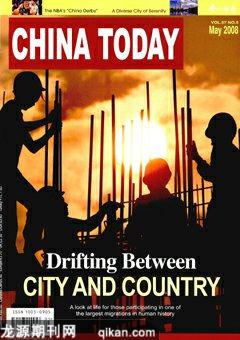Wanfenglin:Forest of Peaks
WU MEILING
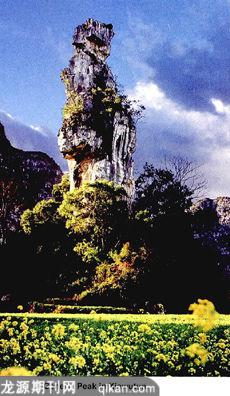
AFTER an unusually bleak winter, spring has returned to Wanfenglin – literally the “forest of ten thousand peaks.” The area is famous for its picturesque natural scenery and the unique cultural practices of the Bouyei and Miao ethnic groups. In recent years its also been one of Chinas pilot “folklore tourism” development sites.
Natures Blessing
Upon entering Xiawutun, Wanfenglins main scenic spot, visitors are confronted by countless mountain peaks standing against the sky, dotted with a sprinkling of cottages. Smoke curls up from chimneys against the hilly backdrop, creating a truly idyllic picture. Rivers, lakes and limestone caves can be found everywhere. Wild flowers and grasses add color to the magnificent scene.
The “forest” of peaks covers a long strip varying in width from 30 to 50 kilometers, over a length of around 200 kilometers. The rugged terrain goes from Qipeng Plateau, some 2,000 meters above sea level, to a lake with an elevation of just 700 meters. The area is bordered by the Wumeng Mountains to the north and Guangxi Zhuang Autonomous Region to the south.
Every peak in the forest is a unique shape. Theres a series around a small basin in Xiawutun, for example, named for their resemblance to creatures and human figures. They include General Peak, Eagle Cliff, Gatekeeper Peak and Fairy Peak. Stretching for some 20 kilometers, this group provides a natural screen for the village and surrounding farmlands. The sight of these peaks has long left a deep impression on visitors. Xu Xiake, great geographer of the Ming Dynasty (1368-1644), visited the area twice and exclaimed in his diary: “Such grandeur! Mountains for thousands of li, rarely seen in other places.”
The main scenic spots around Xiawutun are Xifenglin (West Forest of Peaks), Dongfenglin (East Forest of Peaks), and Beifenglin (North Forest of Peaks). The landscape takes on a different appearance depending on the weather – locals usually make their forecasts based on the clouds gathered around the peaks. The thicker the clouds, the sooner the rain will come and the heavier it will be. If the clouds move on, out comes the sun.
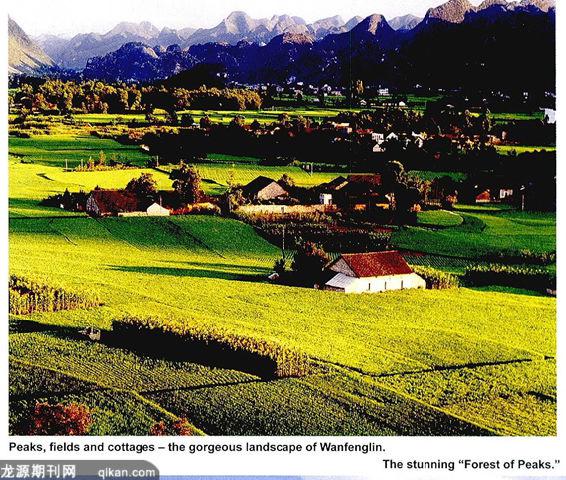
There are some beautiful legends about the formation of the forest of peaks, but geologists generally agree the peaks were produced by movements in the Earths crust some 280 million years ago. They rose out of what was once an ocean as the sea level subsided. Over time the protruding portions of the Earths crust were scorched by the sun and eroded by rain full of carbon dioxide and organic acid, forming crevices and pores on the surface. Over millions of years, the area became the largest and most typical Karst landform, with many rivers, caverns, hot springs, and protruding stalactites. In geological circles, Wanfenglin is known as a natural museum of pyramidal Karst landforms.
Folklore Tourism
The town of Xiawutun lies in the middle of Xingyi National Geopark, around four hours drive from Xingyi, capital of Qianxinan Bouyei and Miao Autonomous Prefecture, in Guizhou Province. The highest peak in the forest, Xifenglin, can be found here. Xiawutun is also known by its nickname the “Grain Barn,” as people of more than 10 ethnic groups have lived and farmed here for generations. Locals include members of the Bouyei, Han, Miao and Yi ethnic groups. The Bouyei are the largest group in the area.
As well as natural sites, Xiawutun is rich in cultural heritage. It is the hometown of General Wang Wenhua, supporter of the founder of the Chinese Republic, Dr. Sun Yat-sen. The Manor of the Liu Family, comprising 13 quadrangles, is one of the largest structures of its type in China, and serves as a good example of the southeastern architectural style. Guizhou Museum of Marriage Customs of Minority Ethnic Groups can also be found in the town.
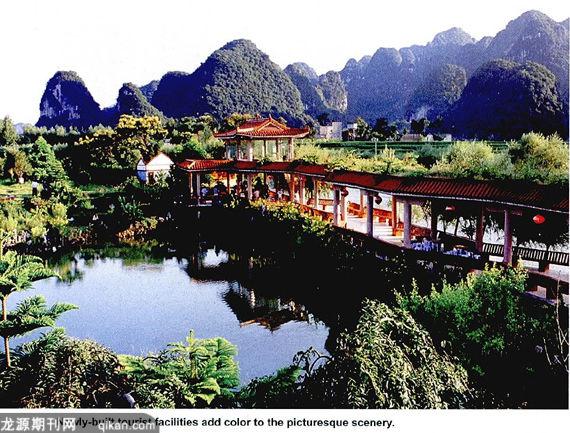
Nahui Village, located deep in the forest of peaks, is another must-see for travelers. As recently as 2002, farmers here lived in dire poverty with an income of just RMB 1,000 (around US $140) a year. The ever-increasing flow of travelers has brought enormous improvements to their lives.
A smooth flagstone pathway along a canal curves through the village. A quiet brook flows under a 150-year-old stone arch bridge, reflecting the old banyan and willow trees along its banks. In the surrounding farmlands, various crops reflect different colors in the sun. Members of the Bouyei, Hui, Miao, Yi and Han ethnicities live a harmonious life here.
“We have good tourism resources, with a beautiful forest of peaks and our Bouyei-style village,” says a proud resident. “The local government provided us with tables, chairs, dishware and sterilizers. Since then, the tourists have flooded in.”
Cen Zhixing runs the first homestay established in Nahui. Formerly his family depended on farming and his work as a driver, which brought in around RMB 1,000 a year. Since they started welcoming tourists in 2003, the familys annual gross income has risen to around RMB 100,000 (US $14,175).
Cens experience inspired a flood of imitators and enthusiasm for developing the local tourism industry. When Xingyi National Geopark was established in 2004, the towns annual tourism revenue grew sharply from RMB 470,000 (US $66,600) to RMB 1.5 million (US $212,600) in a year. By 2007, it had grown to over RMB 5 million (US $709,000).
On February 8, 2005, Nahui received a particularly special guest – President Hu Jintao. Hu encouraged villagers to take good care of their precious natural heritage while fostering development. A huge photo of his visit now stands at the villages entrance. “We want every villager to remember President Hus advice, to step up folklore tourism, protect the environment, and build beautiful homes,” says Xie Chun, secretary of the CPC Xiawutun Committee.
The Right Path to
Development
Xie has witnessed the towns boom in the 10 years since he became the Party secretary. Upon taking office,Xie faced a knotty problem. The agriculture that local people had engaged in for generations was no longer giving good returns. Productivity increased, but income tumbled. So Xie initiated a discussion among the villagers about the right way to move forward. Anxious residents agreed tourism was the only way out of their economic predicament. They felt confident their picturesque surroundings and colorful ethnic diversity would appeal to travelers. Tourism also offered a “greener” alternative to more traditional industrial development.
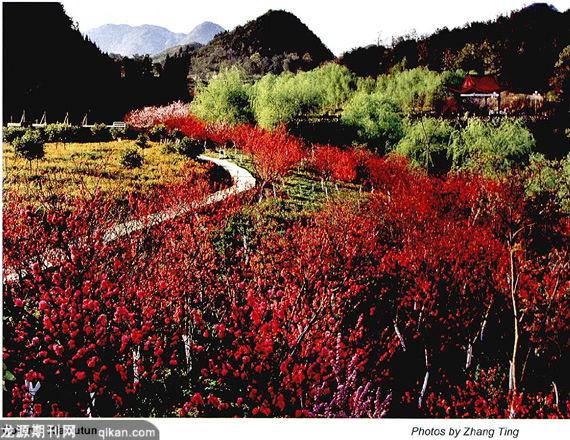
At that time, however, none in the village knew how to go about building a local tourism industry. In 2002, the National Tourism Administration launched a series of pilot schemes in folklore tourism across the country. As one of the pilot sites, the area around Xiawutun, including Nahui, was able to make great improvements to its road system and tourism infrastructure. The local governments tourism development plan, led by Xie Chun, saw a strengthening of management practices and the improvement of local services.
The towns greatly enlarged income has shown the wisdom of their choice, Xie Chun says proudly. He and the townsfolk are now developing products with strong local characteristics and campaigning to promote their folklore tourism to the outside world. The towns annual income from tourism is expected to reach RMB 40 million (US $5.6 million) by 2010, bringing improvements to the villagers lives and giving more travelers the chance to experience the wonder of Wanfenglin.

